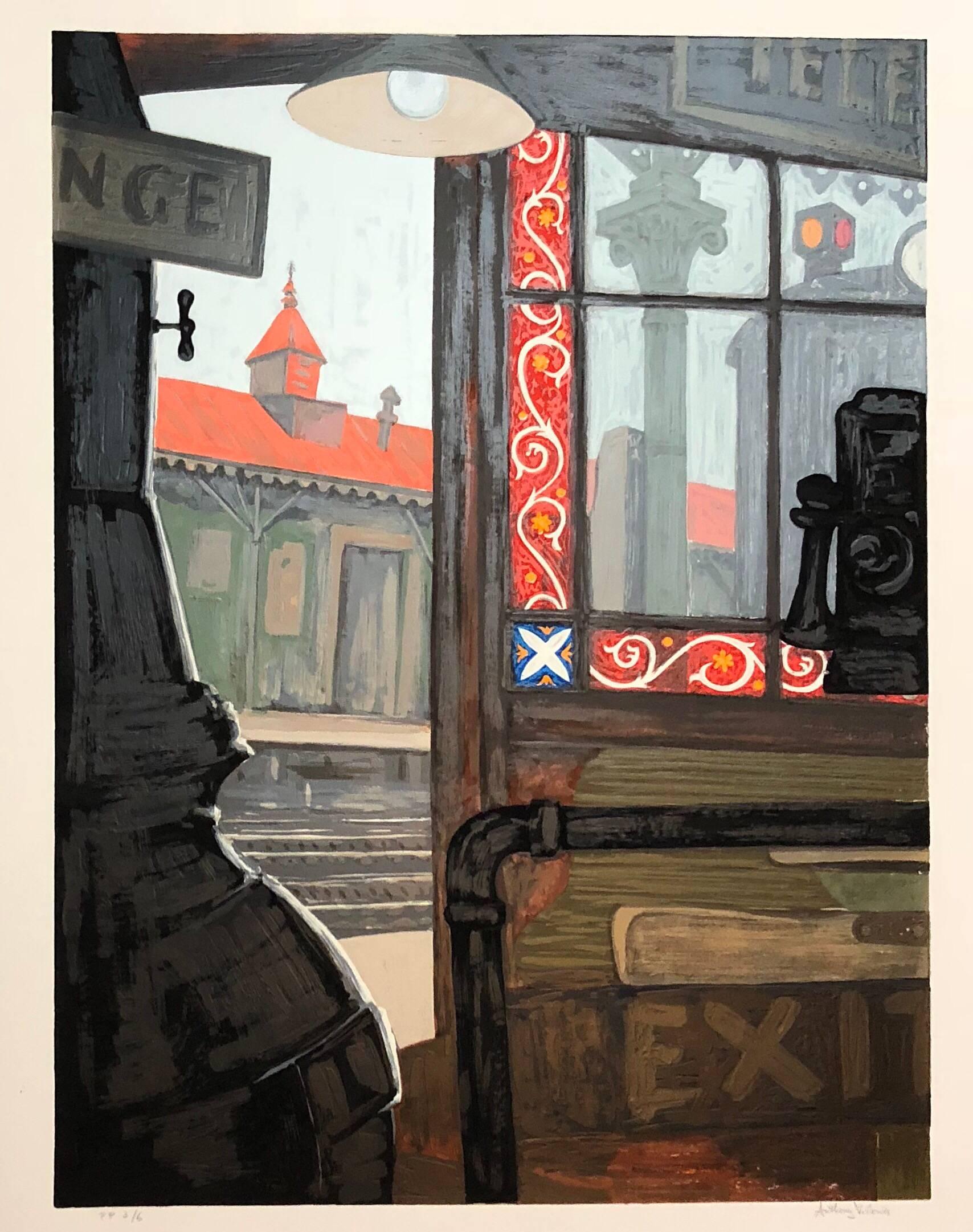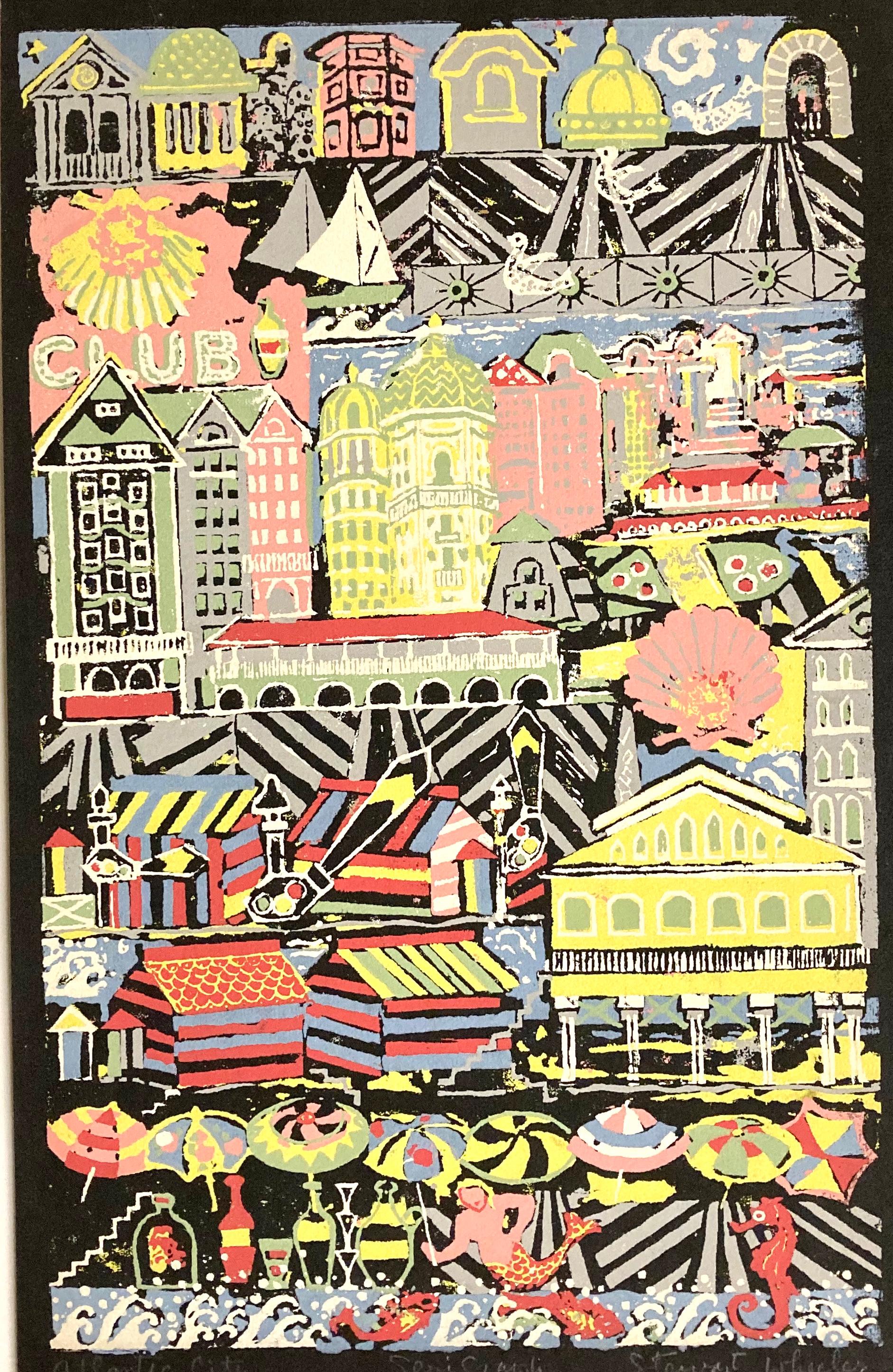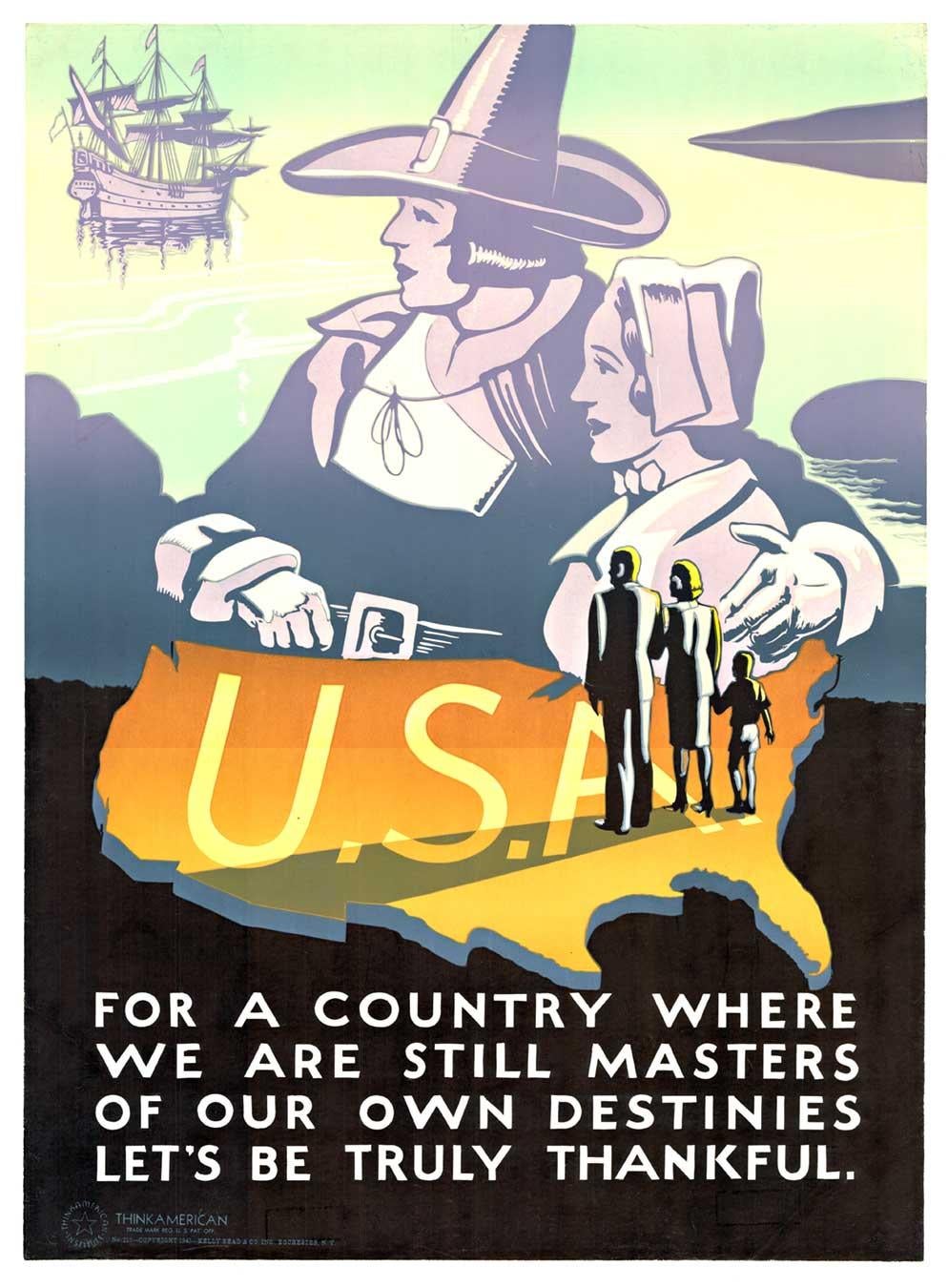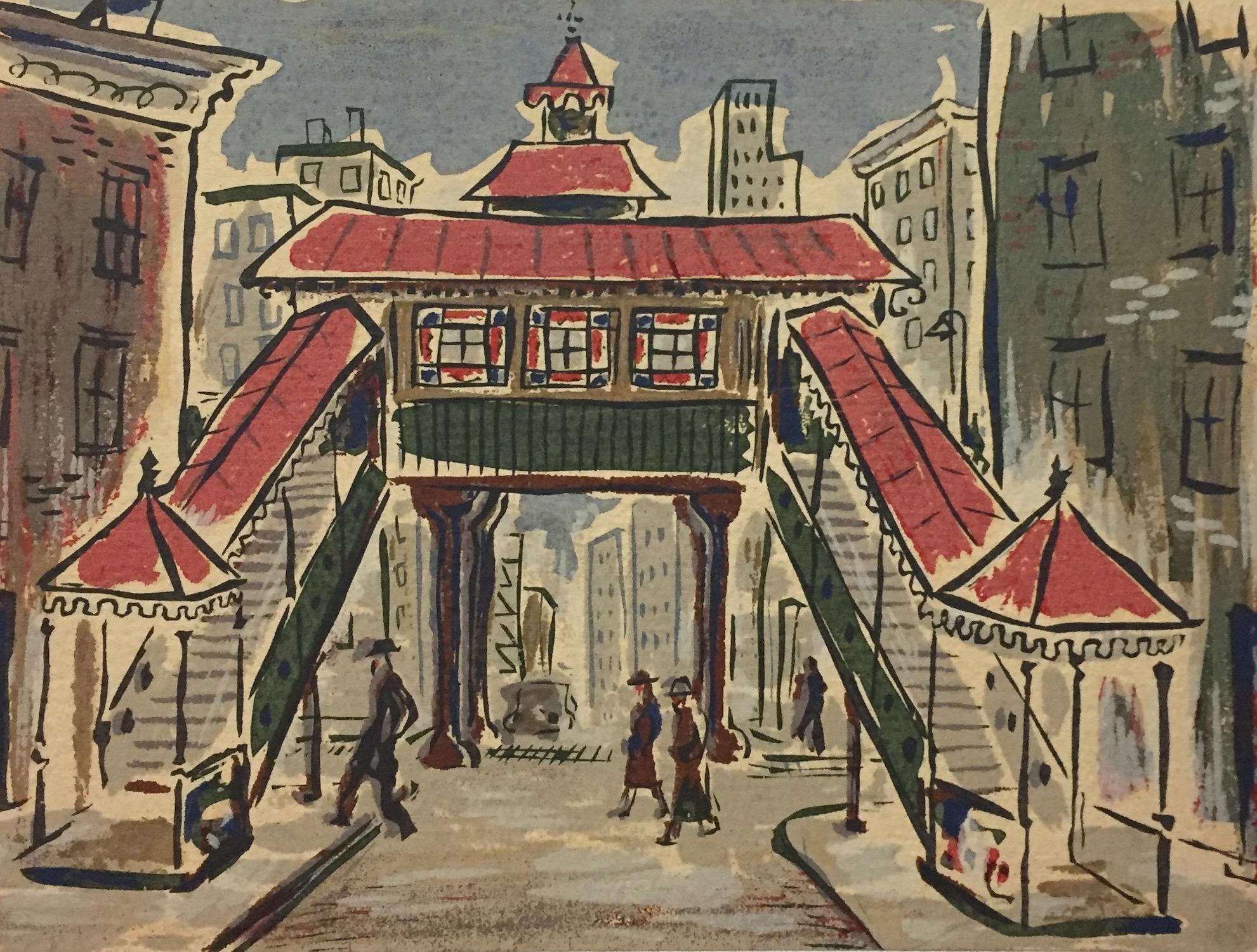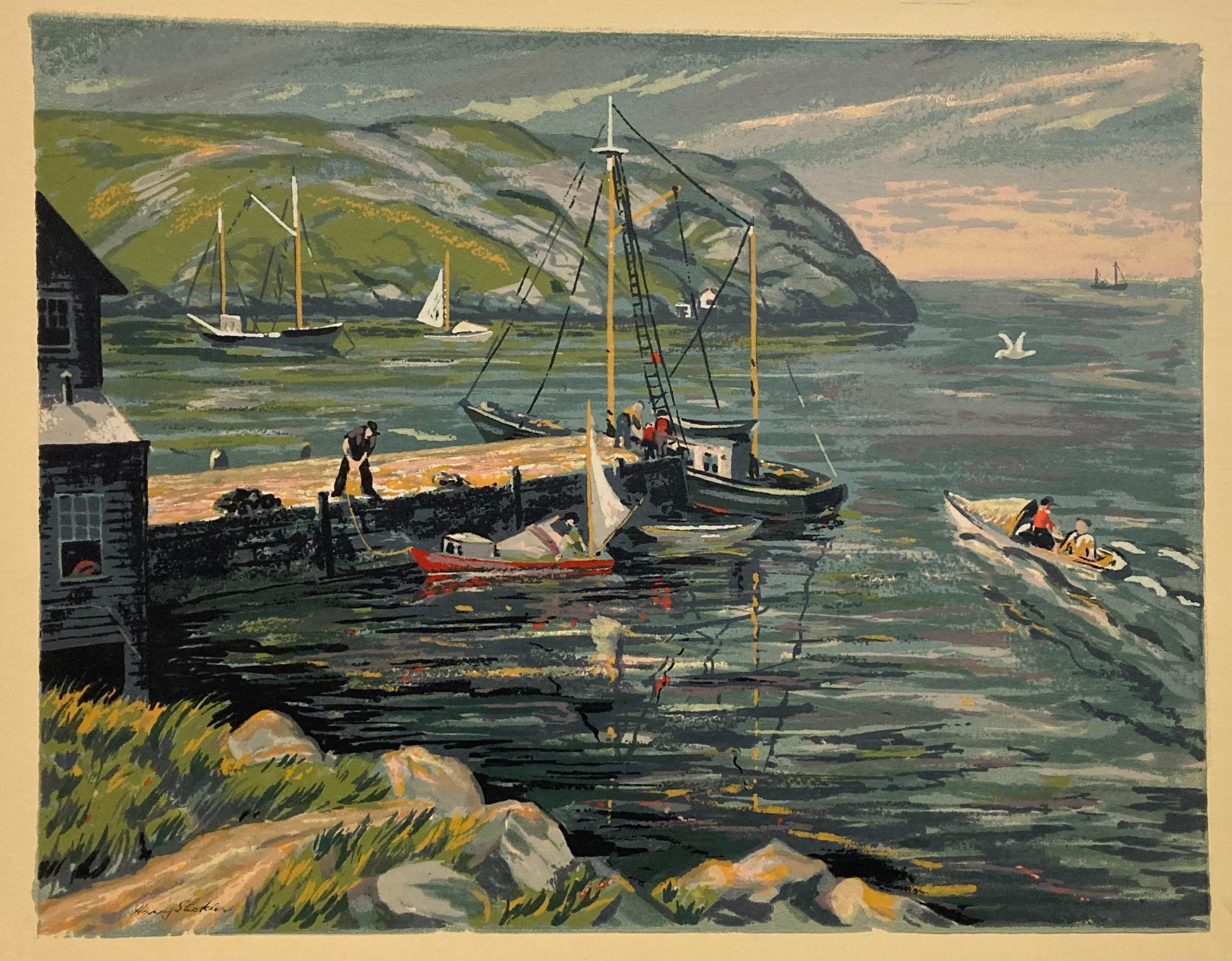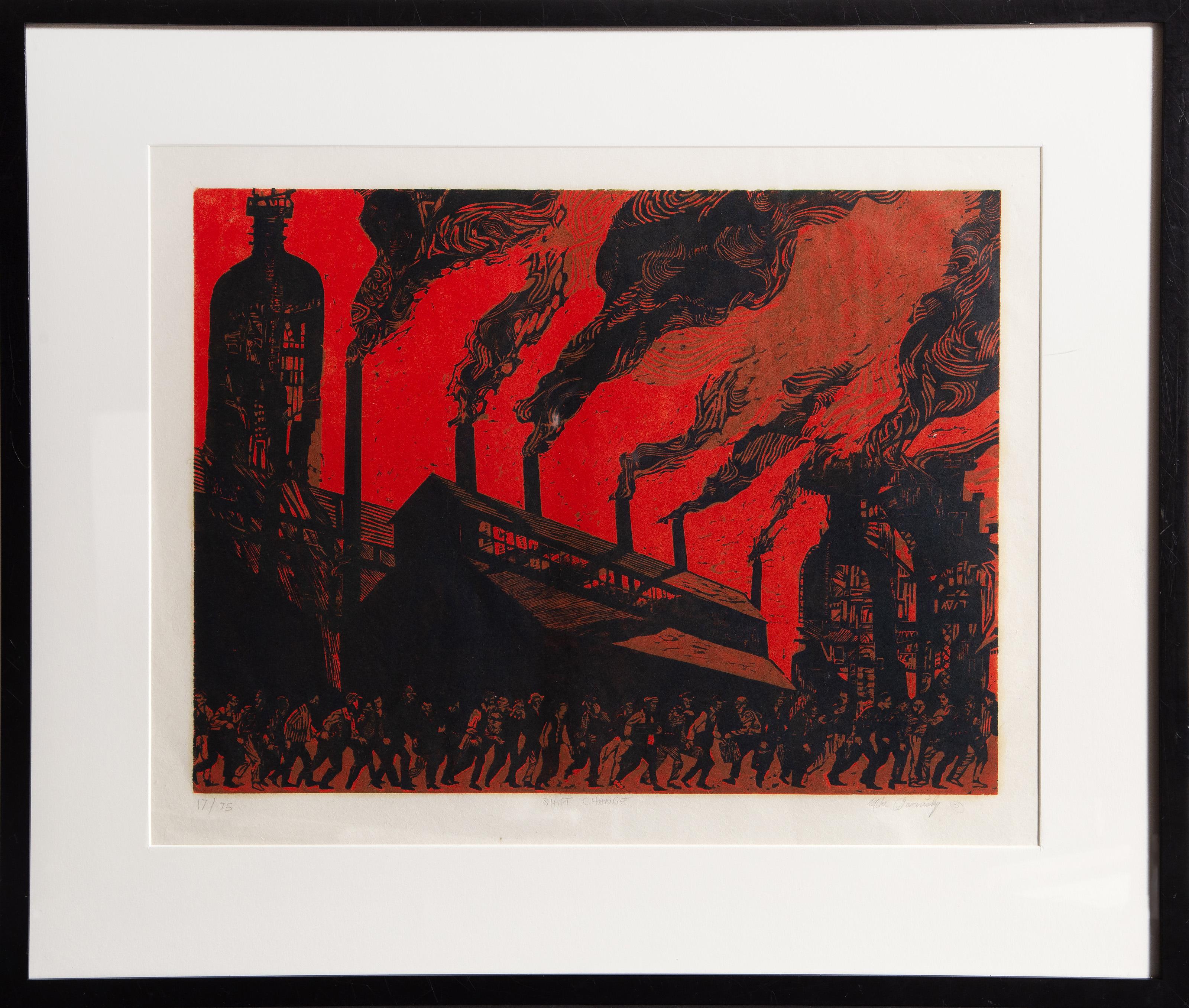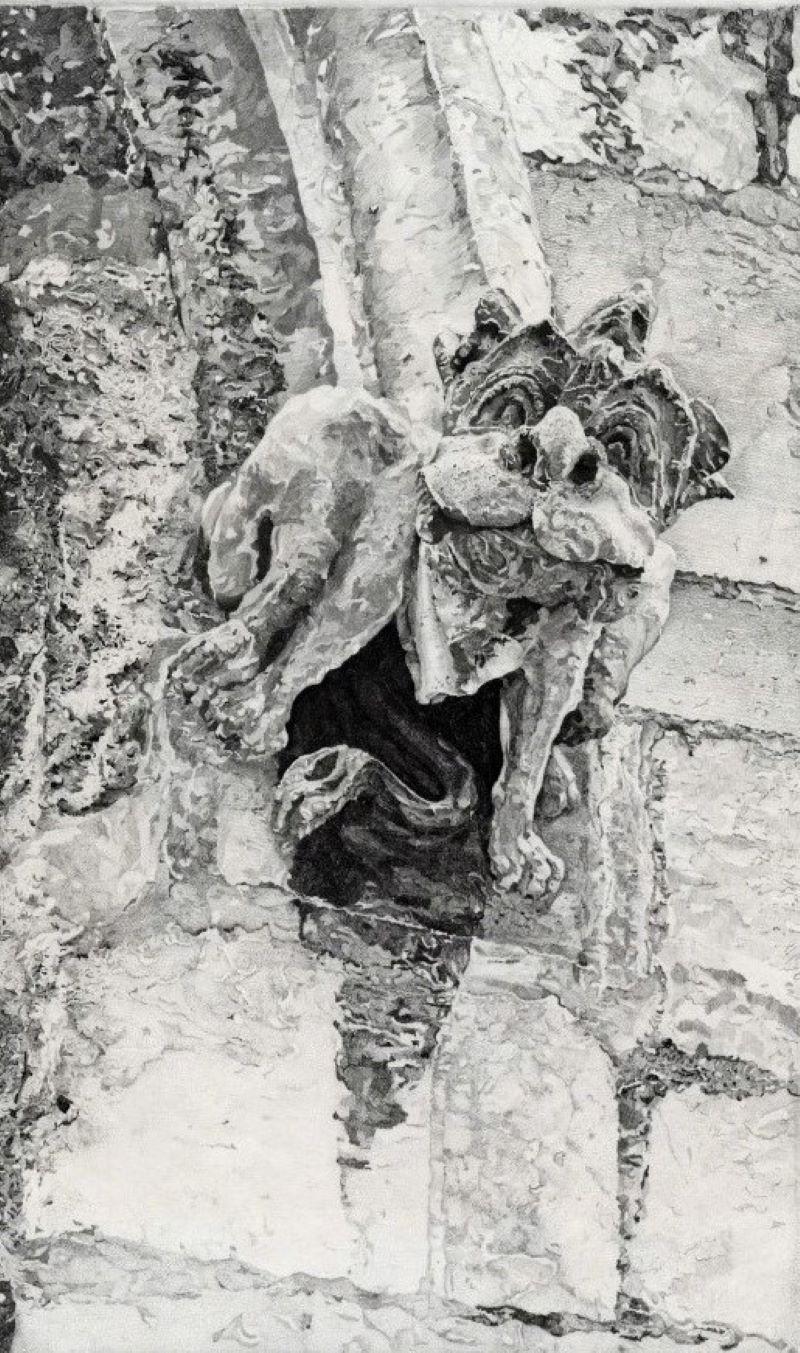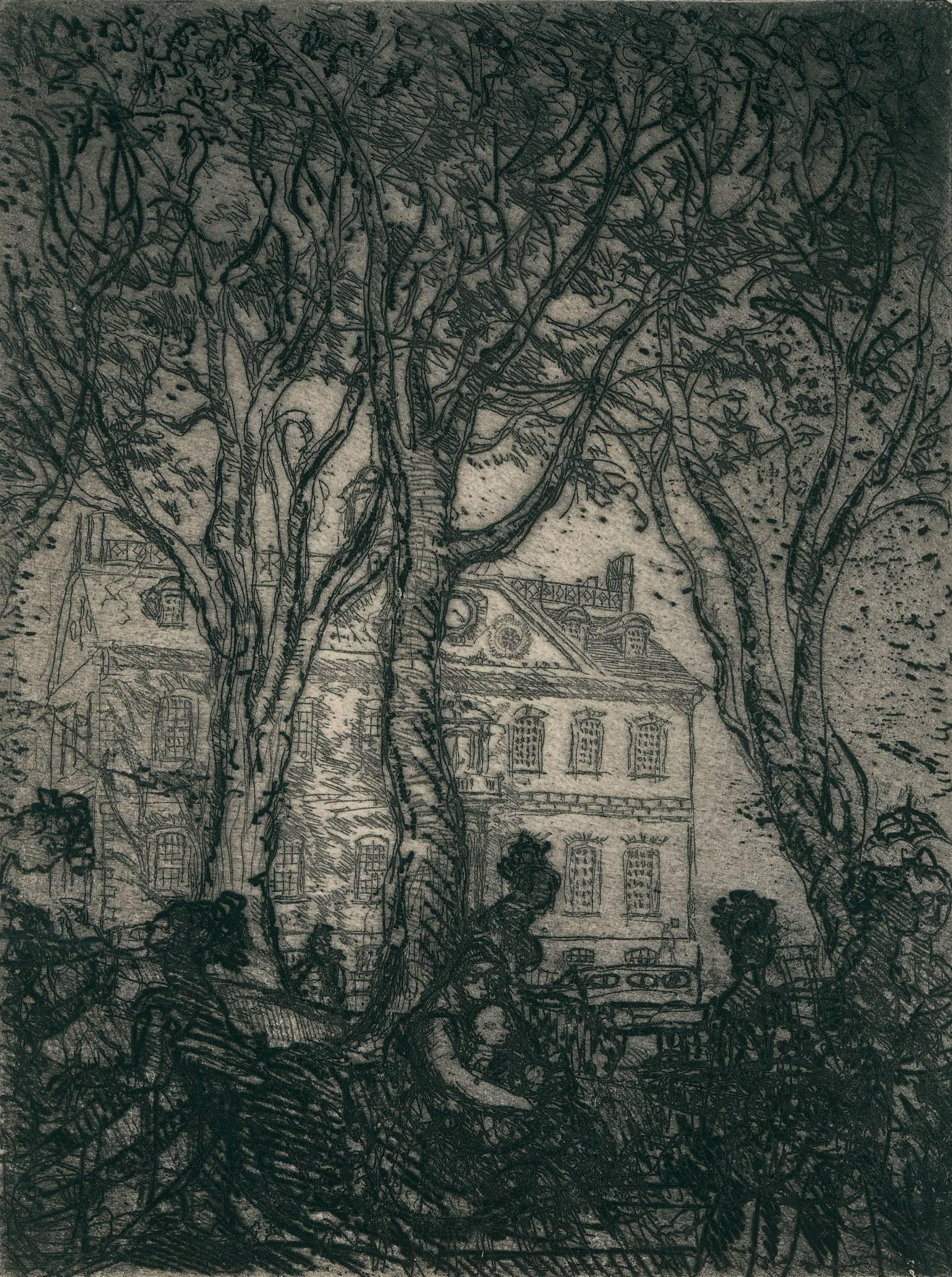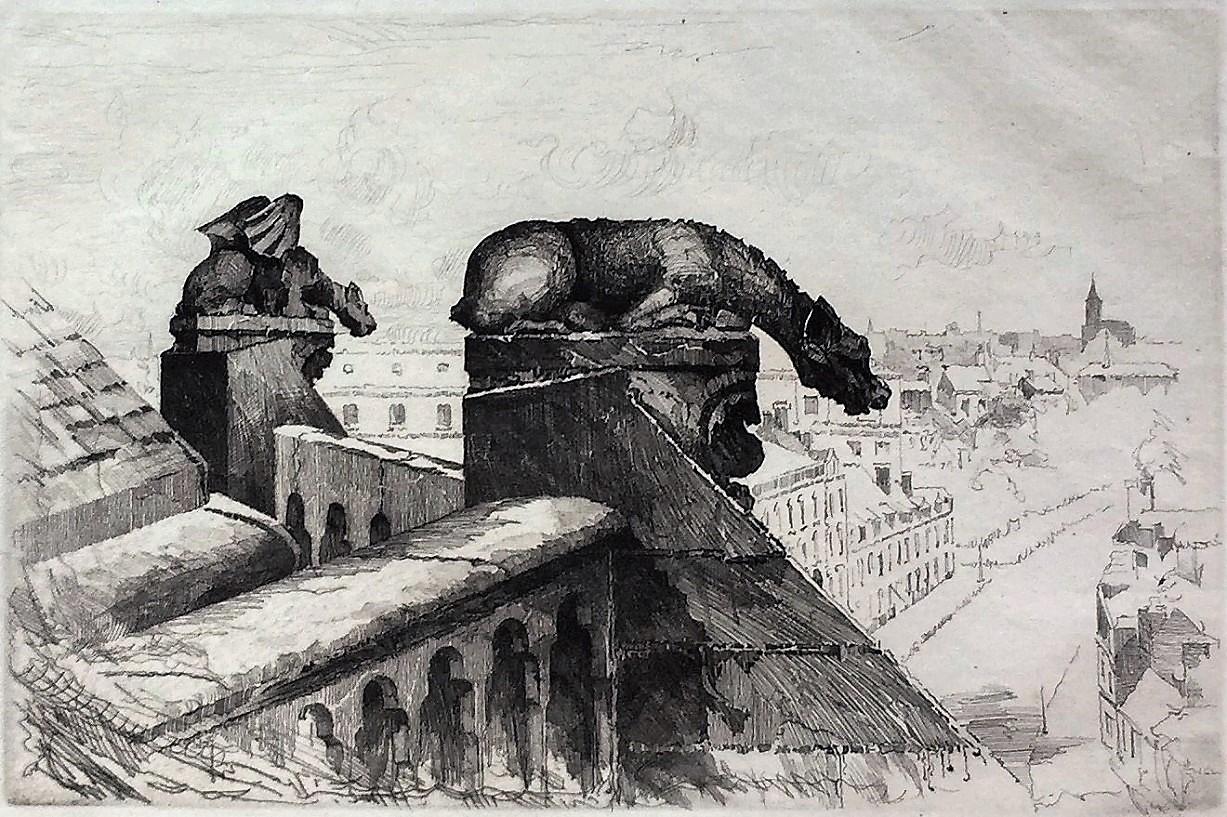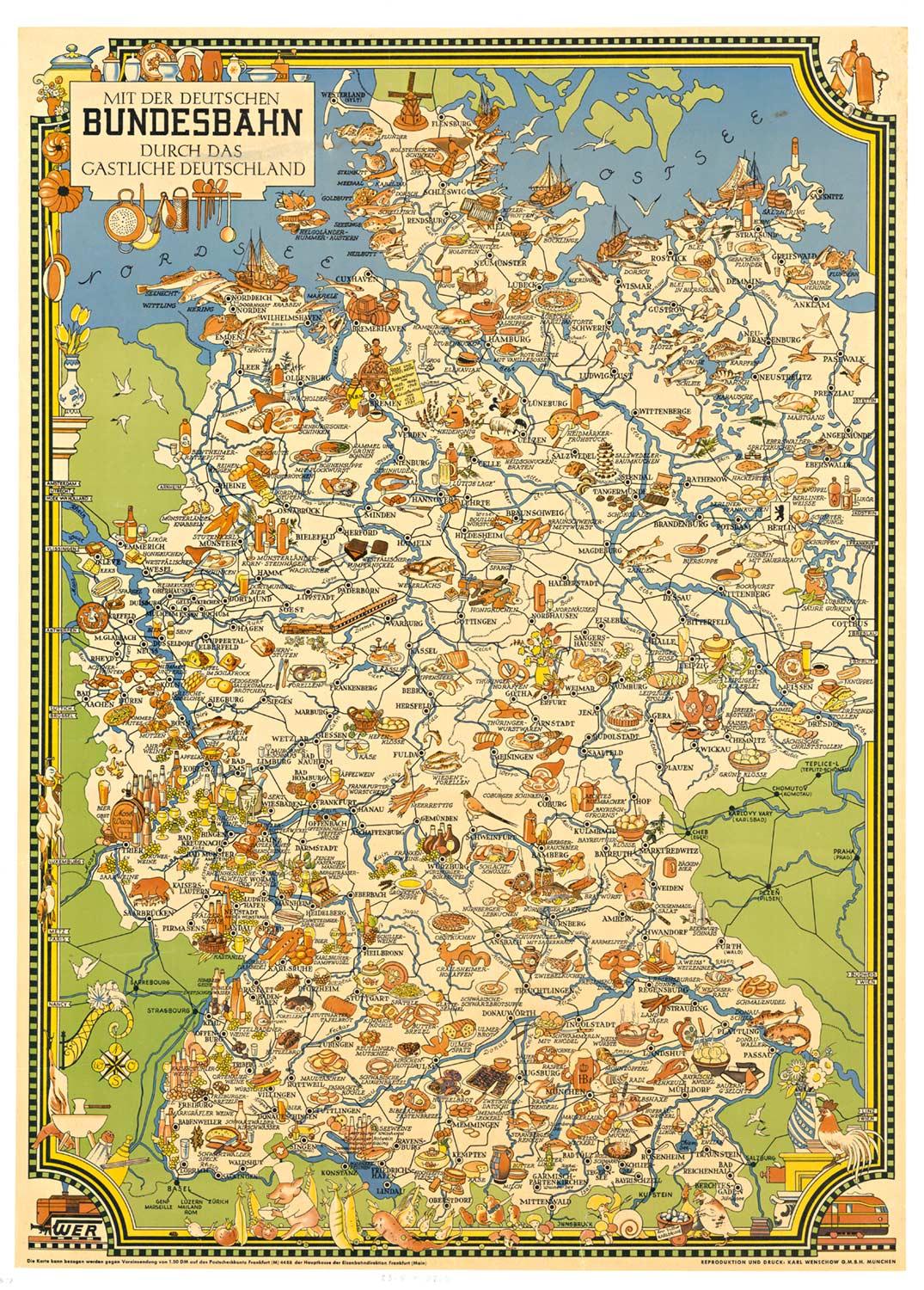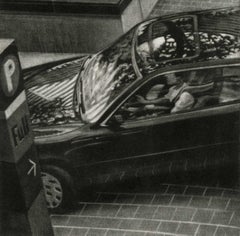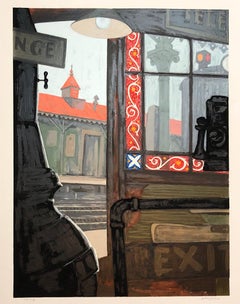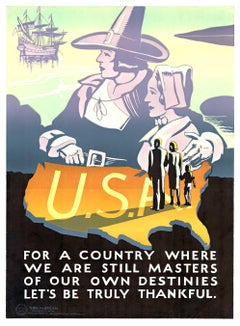
Walking in the Snow (Vermont village)
View Similar Items
Want more images or videos?
Request additional images or videos from the seller
1 of 5
Harry ShoklerWalking in the Snow (Vermont village)circa 1938
circa 1938
About the Item
- Creator:Harry Shokler (1896 - 1978, American)
- Creation Year:circa 1938
- Dimensions:Height: 4 in (10.16 cm)Width: 5.75 in (14.61 cm)
- Medium:
- Movement & Style:
- Period:
- Condition:
- Gallery Location:New Orleans, LA
- Reference Number:1stDibs: LU84136487302
About the Seller
4.9
Gold Seller
These expertly vetted sellers are highly rated and consistently exceed customer expectations.
Established in 1988
1stDibs seller since 2018
752 sales on 1stDibs
Typical response time: 3 hours
Associations
International Fine Print Dealers Association
More From This SellerView All
- Delayed (suburban New Jersey commuter walks thru rain because bus is late)By Art WergerLocated in New Orleans, LA"Delayed" is an edition of 100. Art Werger creates a memory of his boyhood home in suburban New Jersey. It's late, cold and rainy as this woman raises her umbrella to brave the wal...Category
21st Century and Contemporary American Modern Figurative Prints
MaterialsMezzotint
- ListeningBy Art WergerLocated in New Orleans, LAListening is a 2000 mezzotint that is signed by the artist. Art Werger’s lyrical suburban scenes are evocative of boyhood summer evenings while his city images are fraught with tens...Category
21st Century and Contemporary American Modern Figurative Prints
MaterialsMezzotint
$100 Sale Price60% Off - 7 A. M. St. LouisBy Art WergerLocated in New Orleans, LAIt's early morning I'm St. Louis in this 2002 mezzotint that is signed and numbered Art Werger’s lyrical suburban scenes are evocative of boyhood summer evenings while his city imag...Category
21st Century and Contemporary American Modern Figurative Prints
MaterialsMezzotint
$125 Sale Price28% Off - Mexican Orchestra (joy of the people is captured in this celebratory festival)By George Overbury HartLocated in New Orleans, LA"Mexican Orchestra" is one of the George Overbury Hart's largest pieces. It is #14 from a limited edition of 50. The image captures a festive event with hanging lanterns, an orches...Category
1920s American Modern Figurative Prints
MaterialsLithograph
- CommencementBy Caroline DurieuxLocated in New Orleans, LACaroline Durieux's image captures a lone figure in her garden in this southern plantation in Louisiana. "Plantation Garden" is a lithograph created by Durieux in 1946 in an edition of 20. It is signed in pencil. Durieux shared her feeling about this piece with these reflections. “The spectrum analysis of satire runs from the red of invective at one end to the violet of the most delicate irony at the other.” David Worcester 16, "The Art of Satire". The feeling expressed in Plantation Garden is that of a dirge with ironic overtones; it is sad, nostalgic yet satirical. The bent figure of the old lady, the ancient trees, the static moss, all seem to belong to the past; even the lady is old. For contrast, a ray of late afternoon sun lights up the only young note in the picture: perennials in the foreground. When “we are satirical and we are friendly at the same time, the consciousness of the friendship gives a regretful and tender touch to the satire, and the sting of the satire makes the friendship a trifle humble and sad.” George Santayna 255, "The Sense of Beauty". This concept of satire mixed with friendship comes closer to humor because there is less censure involved. In "Plantation Garden", the satire is tempered by a feeling of empathy. Caroline Durieux (American, 1896 – 1989) Printmaker, painter, satirist, innovator, social activist, Caroline Durieux was born in New Orleans and was already making sketches by the age of four. Her formal art training was at Newcomb College (1912-1917) and the Pennsylvania Academy of Fine Arts (1918-1920). Carl Zigrosser of the Philadelphia Museum of Art encouraged Durieux to try lithography. While living in Mexico, she learned lithography from Emilio Amero...Category
1940s American Modern Landscape Prints
MaterialsLithograph
- Into the Night (a lone male emerges from a subway stop by the Flatiron Building)By Frederick MershimerLocated in New Orleans, LAA lone figure emerges out of bright lights streaming from a subway entrance at the corner of 23rd and Broadway near the Flatiron Building and Madison Square Park. He has just exited the uptown...Category
Early 2000s American Modern Figurative Prints
MaterialsMezzotint
You May Also Like
- Modernist Silkscreen Screenprint 'El Station, Interior' NYC Subway, WPA ArtistBy Anthony VelonisLocated in Surfside, FLscreenprint printed in color ink on wove paper. New York City subway station interior. Anthony Velonis (1911 – 1997) was an American painter and designer born in New York City who helped introduce the public to silkscreen printing in the early 20th century. While employed under the federal Works Progress Administration, WPA during the Great Depression, Velonis brought the use of silkscreen printing as a fine art form, referred to as the "serigraph," into the mainstream. By his own request, he was not publicly credited for coining the term. He experimented and mastered techniques to print on a wide variety of materials, such as glass, plastics, and metal, thereby expanding the field. In the mid to late 20th century, the silkscreen technique became popular among other artists such as Robert Rauschenberg and Andy Warhol. Velonis was born into a relatively poor background of a Greek immigrant family and grew up in the tenements of New York City. Early on, he took creative inspiration from figures in his life such as his grandfather, an immigrant from the mountains in Greece, who was "an ecclesiastical painter, on Byzantine style." Velonis attended James Monroe High School in The Bronx, where he took on minor artistic roles such as the illustration of his high school yearbook. He eventually received a scholarship to the NYU College of Fine Arts, into which he was both surprised and ecstatic to have been admitted. Around this time he took to painting, watercolor, and sculpture, as well as various other art forms, hoping to find a niche that fit. He attended NYU until 1929, when the Great Depression started in the United States after the stock market crash. Around the year 1932, Velonis became interested in silk screen, together with fellow artist Fritz Brosius, and decided to investigate the practice. Working in his brother's sign shop, Velonis was able to master the silkscreen process. He reminisced in an interview three decades later that doing so was "plenty of fun," and that a lot of technology can be discovered through hard work, more so if it is worked on "little by little." Velonis was hired by Mayor LaGuardia in 1934 to promote the work of New York's city government via posters publicizing city projects. One such project required him to go on a commercial fishing trip to locations including New Bedford and Nantucket for a fortnight, where he primarily took photographs and notes, and made sketches. Afterward, for a period of roughly six months, he was occupied with creating paintings from these records. During this trip, Velonis developed true respect and affinity for the fishermen with whom he traveled, "the relatively uneducated person," in his words. Following this, Velonis began work with the Public Works of Art Project (PWAP), an offshoot of the Civil Works Administration (CWA), where he was assigned to serve the different city departments of New York. After the formation of the federal Works Progress Administration, which hired artists and sponsored projects in the arts, he also worked in theater. Velonis began working for the federal WPA in 1935. He kept this position until 1936 or 1938, at which point he began working in the graphic art division of the Federal Art Project, which he ultimately led. Under various elements of the WPA program, many young artists, writers and actors gained employment that helped them survive during the Depression, as well as contributing works that created an artistic legacy for the country. When interviewed in December 1994 by the Library of Congress about his time in the WPA, Velonis reflected that he had greatly enjoyed that period, saying that he liked the "excitement" and "meeting all the other artists with different points of view." He also said in a later interview that "the contact and the dialogue with all those artists and the work that took place was just invaluable." Among the young artists he hired was Edmond Casarella, who later developed an innovative technique using layered cardboard for woodcuts. Velonis introduced silkscreen printing to the Poster Division of the WPA. As he recalled in a 1965 interview: "I suggested that the Poster division would be a lot more productive and useful if they had an auxiliary screen printing project that worked along with them. And apparently this was very favorably received..." As a member of the Federal Art Project, a subdivision of the WPA, Velonis later approached the Public Use of Arts Committee (PUAC) for help in "propagandizing for art in the parks, in the subways, et cetera." Since the Federal Art Project could not be "self-promoting," an outside organization was required to advertise their art more extensively. During his employment with the Federal Art Project, Velonis created nine silkscreen posters for the federal government. Around 1937-1939 Velonis wrote a pamphlet titled "Technical Problems of the Artist: Technique of the Silkscreen Process," which was distributed to art centers run by the WPA around the country. It was considered very influential in encouraging artists to try this relatively inexpensive technique and stimulated printmaking across the country. In 1939, Velonis founded the Creative Printmakers Group, along with three others, including Hyman Warsager. They printed both their own works and those of other artists in their facility. This was considered the most important silkscreen shop of the period. The next year, Velonis founded the National Serigraph Society. It started out with relatively small commercial projects, such as "rather fancy" Christmas cards that were sold to many of the upscale Fifth Avenue shops...Category
1980s American Modern Figurative Prints
MaterialsScreen
- Stewart Wheeler, Atlantic City (New Jersey)Located in New York, NYThe little that is know about the painter and printmaker Stewart Wheeler indicates that most of his career was spent in Philadelphia, Pennsylvania. And...Category
Mid-20th Century American Modern Landscape Prints
MaterialsScreen
- Original "Think American" USA World War II vintage posterLocated in Spokane, WAOriginal poster: For a Country Where We Are Still Masters of Our Own Destinies, Let's Be Truly Thankful. Silk-screened patriotism. This is a poster meant to appeal to the American f...Category
1940s American Modern Figurative Prints
MaterialsScreen
- Original "Wagon Lits" pop art style serigraph travel by train posterBy Valerio AdamiLocated in Spokane, WAOriginal “Wagon Lits” serigraph poster by the artist Valerio Adami. It was printed in France by GrafiCaza (Michel Caza), one of the finest serigraph companies on woven paper—in exce...Category
1990s American Modern Figurative Prints
MaterialsScreen
- Anthony Velonis, Local Stop (New York City)By Anthony VelonisLocated in New York, NYAnthony Velonis (1911-1997) was an extremely innovative artist. He learned the technique of screen printing, also known as silkscreen, (for which he also coined the term serigraphy) while working with a wall paper manufacturer. Unusual for fine prints, the image is made by the artist in the same direction as it will print, as the colored inks are forced through fabric (silk) directly onto a paper surface. (He also invented a machine that could print onto column-shaped items such as cocktail glasses or make-up bottles and a rack system for drying sheets of paper with wet ink in which the sheets are just inches apart.) The technique allows extreme versatility on the part of the artist and the ink tends to sit on top of the paper rather than soak into the fibers. In 1934 Velonis used this new technique on Mayor LaGuardia's NYC Poster...Category
1930s American Modern Landscape Prints
MaterialsScreen
- Harry Shokler, Island HarborBy Harry ShoklerLocated in New York, NYHarry Shokler used serigraphy to great advantage in this landscape. It's colorful and detailed. It is signed in the image at the lower left. When printmakers began making serigraphs...Category
1940s American Modern Figurative Prints
MaterialsScreen
Recently Viewed
View AllMore Ways To Browse
Shokler Harry
Veduta Del Ponte
Vintage Northwest Orient
Les Girafes
Mark Leblanc
Christine Ravaux On Sale
Verde Antigua
Africa Maps By Emanuel Bowen
Girafe En Feu
Lisa Benson
Approaching Storm Grant Wood
E Mcknight
Dali Normandy
Marmot Vintage
Harold Altman Path
Hasui Kawase Block Print
W L Wyllie
Salvador Dali Normandy
